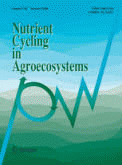Green manure of multipurpose trees is known to be a good source of nutrients to crop. However, most agroforestry species do not have adequate phosphorus in their leaves. Supplementing green manure with moderate dose of P is a beneficial strategy to improve food security in Rwanda. This study examines the effects of Calliandra calothyrsus Meissner, Tithonia diversifolia Hensley A.Gray and Tephrosia vogelii Hook.f. green manure applied independently or in combination with triple super phosphate (TSP) and lime on maize yield and P uptake in the Oxic Tropudalf of Rubona, Rwanda. The treatments were the control, lime at 2.5 t ha-1, TSP at 25 and 50 kg P ha-1, leaf of C. calothyrsus, T. diversifolia, and T. vogelii each at 25 and 50 kg P ha-1, respectively. Leaf shrubs biomass, TSP and lime were applied for four consecutive seasons (2001-2004). The results showed that the combination of green manure with TSP at a rate of 50 kg P ha-1 significantly increased maize yield from 24 to 508% when compared to the control and T. divesifolia combined with TSP was leading (508%). Equally, the same treatments as indicated above showed higher P uptake (15.6-18. 6 kg P ha-1) than the control (5 kg P ha-1) and 65% of maize yields variation was explained by total P uptake. The plant residues quality such as C:N ratio, total plant N, and P significantly influenced the variability of maize grain yields.
DOI:
https://doi.org/10.1007/s10457-010-9324-9
Altmetric score:
Dimensions Citation Count:
























